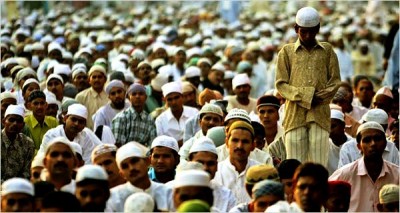Simeen Kaleem and Kartikey Shukla for BeyondHeadlines
Caste is not only one factor for social stratification among Indian Muslims. There are many other factors which are responsible for inequalities within Muslim community. These all are covered under the umbrella concept of human development which includes gender equality, education, health, employment and other development indicators which refer to the capability of human beings. The higher caste Muslims can afford expensive services but weaker section of the Muslims community can’t afford these private services.
Education is one of the major indicators of human development, the emergence of professional education and private education has led a government to form a non – practical attitude towards Madarasa, which has destroyed the source of primary education. Most of the educators claimed that Madarasa and Sanskrit school do not have the ability to provide holistic development for the upcoming future of the nation. Aligarh Muslim University was established with the vision to provide modern education to the Muslims inclusively, but Lower caste Muslims in Indian academia is very lees in the number. The second and the most important aspect is Indian traditional businesses like lock industry, bangle industry, carpet industry etc, which were owned by lower caste Muslims in north India. There is a huge gap in their development because these industries are in the phase of crisis due to liberal economic policy and the entry of non-Muslims in these industries. Health indicators are quite impressive among all Muslims.
“The Muslim rural elite, who held land, were adversely affected by the abolition of Zamindari; the urban elite particularly from north India moved to Pakistan. The Muslim intelligentsia was effectively barred from government employment. Muslim community had never been very active in commerce and industry. The Muslim community has never been able to accumulate a surplus to invest in their education and welfare, or to pay bribes for securing government service. Confined to its ghettos and to petty occupations, devoid of education and access to bank credit, they just managed to keep body and soul together.
In the era of planned inclusive development, they were deprived of even their proportional benefits of development even at the operational level. We do not have the figures of their per capita income but nearly 80% live on a daily expenditure of Rupees 20. Surely Muslims are very poorly represented in the upper and middle classes. Continuously they faced pressure against the exercise of their religious freedom and the adverse impact of the recurrent communal violence. Despite all these handicaps, it is a tribute to the resilience of the community that it maintained its religious identity and at least managed to keep alive a system for the religious education of its children and to open some schools wherever possible.”[1]
The madrasas and other Muslim religious institutions that receive the bulk of community resources (and, in some cases, from patrons abroad, such as in the Gulf) generally promote extremely ritualistic and narrow versions of Islam. The Quran stresses active social engagement and exhorts people to help the needy and so on, but this socially-engaged understanding of religion that involves practical effort to address the real-world problems of the poor (as opposed to simply preaching about them) is quite in contrast to what many Muslim organizations propagate. Their work is limited largely to preaching, and rarely does it take the form of putting the social ethics of Islam (as they diversely understand them) into practical form of projects for the needy and poor. Preaching and publishing endless amounts of literature extolling (their sectarian versions of) Islam as ‘the solution to all the problems of the world’ thus substitutes for active effort to solve such problems.
Few[2], if any, of the mullah-led organizations run quality modern educational institutions or NGOs working among the Muslim poor. There are, of course, some such institutions and organizations, but, generally speaking, and notable exceptions notwithstanding, they suffer from lack of professionalism and internal democracy, and often just exist on paper. Like many other NGOs, many of them are little more than money-making rackets, and are generally rife with nepotism and corruption. They continue to operate in the charity mode, and thus their impact is even more limited. Typically, they shun collaborating with government agencies or with non-Muslim NGOs.
Dichotomy between Qur’anic Equality and Indian Muslim Caste System
Social Stratification among Muslim Communities in India























